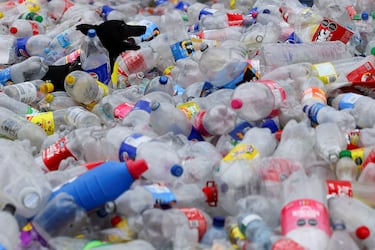Food packaging is actually a direct source of microplastics in food products, new study finds
Scientists are calling for more research into the amount of microplastics entering the food supply from plastic packaging, warning that it could be a significant vehicle for transfer.


Do you ever worry about plastic seeping into your food? Scientists are tackling this question, and their findings contain a major warning for policymakers.
A new study published in NPJ Science of Food confirms a growing suspicion about the presence of microplastics in our food. Researchers at the Food Packaging Forum Foundation in Zürich, Switzerland, the Norwegian University of Science and Technology, and the Swiss Federal Institute of Aquatic Science and Technology were involved in the project.
The study aimed to gain a deeper understanding of the existing research on the transfer of microplastics, or micro- and nanoplastics (MNPs), from packaging to food. The team reviewed over 100 studies to gain a deeper understanding of how packaging contributes to contamination. Of those studies, only seven were considered “highly reliable,” with many falling short of research standards. "Identifying the sources of MNPs in foodstuffs is a prerequisite to reducing exposures,“ wrote the authors. Before understanding the full impact MNPs have on human health, scientists need a better understanding of how the concentration of plastics is making its way into food.

Plastic packaging can lead to contamination
Despite the limited amount of credible research, the team found evidence that plastic packaging can release MNPs into food that is later consumed. To illustrate the scale of the issue, one example highlighted the release of MNPs when a bottle cap is opened. The researchers also looked at how cutting food on a plastic cutting board could lead to contamination.
The authors acknowledge that little is known about how microplastics affect the human body, though early research suggests they may disrupt the gut microbiome. However, the main goal of the study was to highlight the lack of reliable data available to policymakers on plastic migration from packaging into food.
Get your game on! Whether you’re into NFL touchdowns, NBA buzzer-beaters, world-class soccer goals, or MLB home runs, our app has it all. Dive into live coverage, expert insights, breaking news, exclusive videos, and more – plus, stay updated on the latest in current affairs and entertainment. Download now for all-access coverage, right at your fingertips – anytime, anywhere.
Complete your personal details to comment